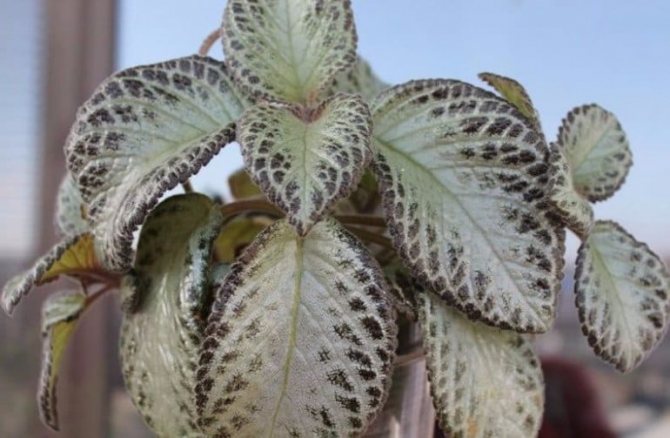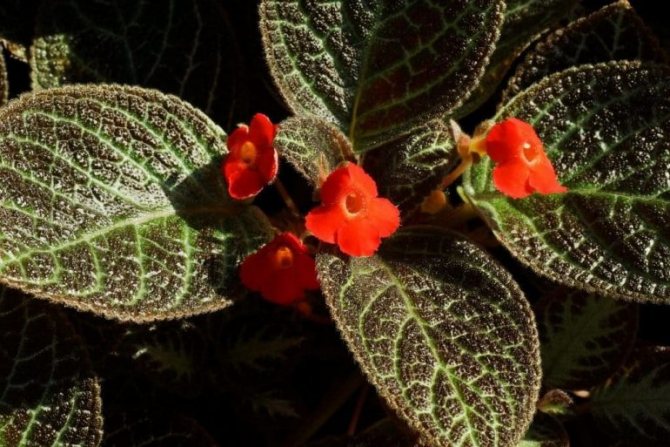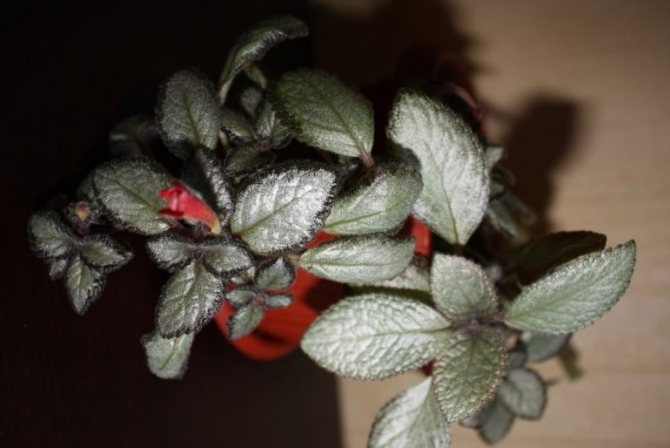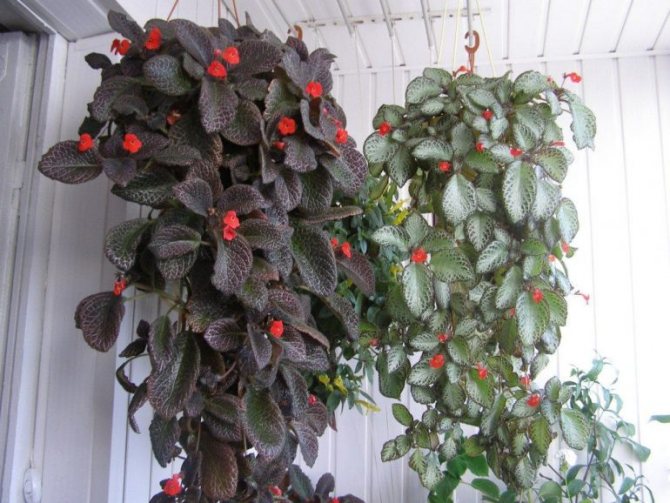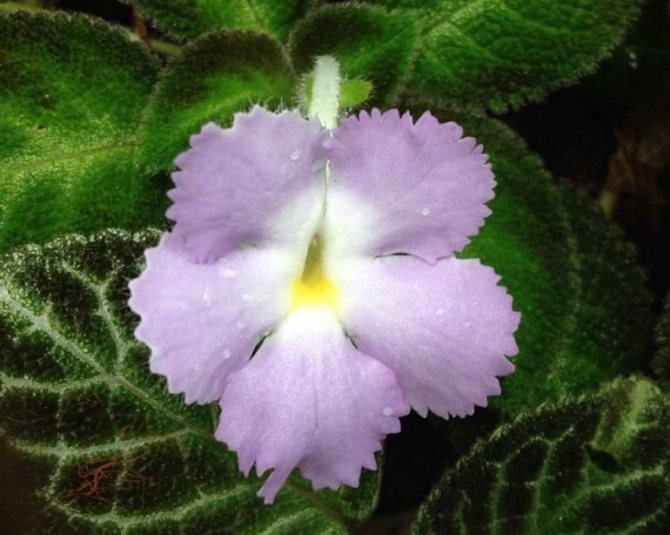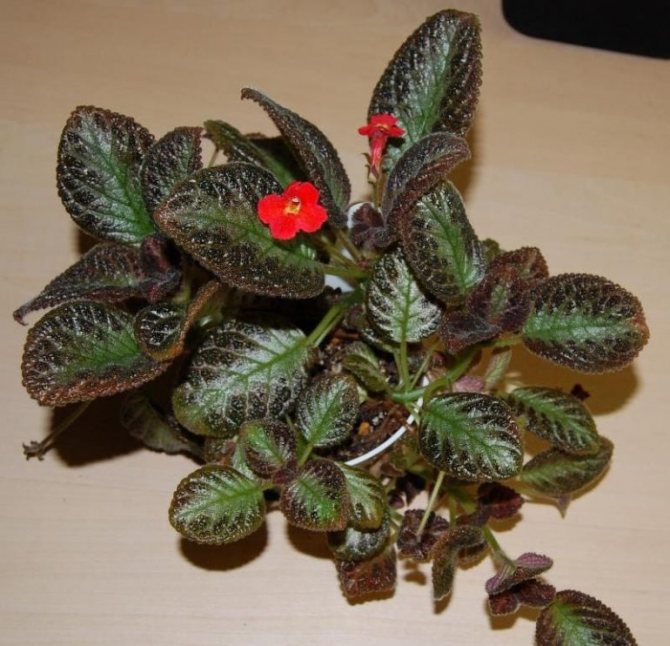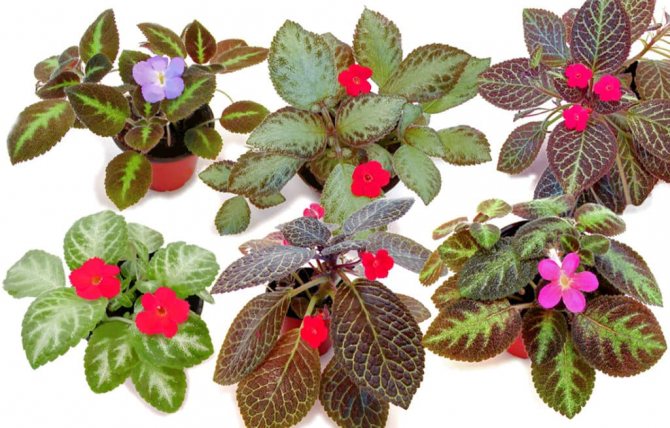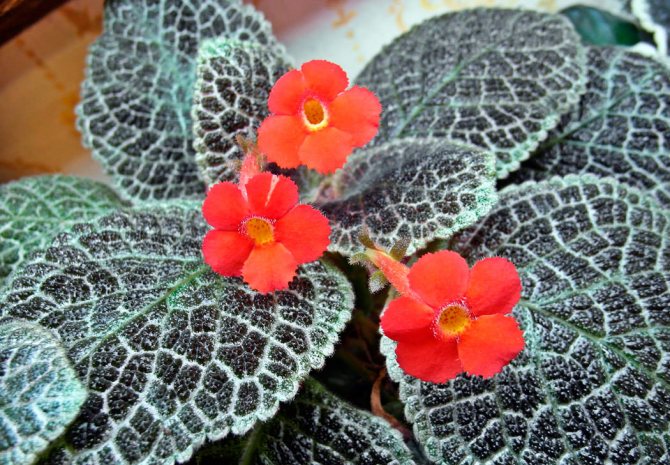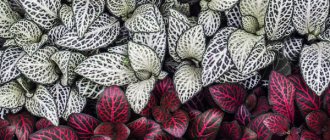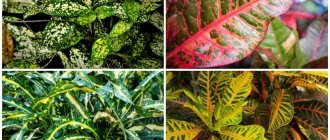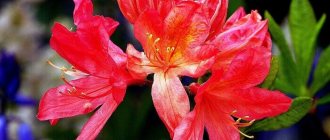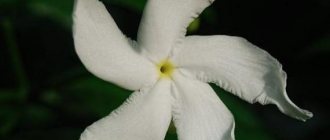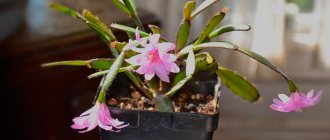Episkios is an ampelous plant, the name of which comes from the Greek word "episkios" - dark, shaded. It combines the beauty of flowers and unusual leaves. The leaves of the episode are decorated with a pattern of various shades of red, purple, green and bronze. In addition, they are able to reflect light, thanks to this, it seems that the flower is sparkling. Among these unusual leaves, with proper care, bright flowers can grow almost all year round. The episode is often called "chameleon plant" or "peacock flower".
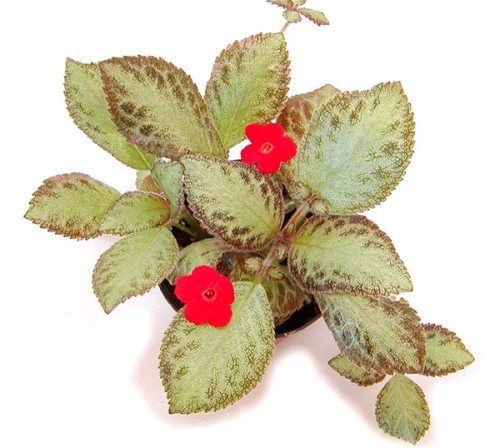
The homeland of the episode is the tropics of Mexico, Colombia, Brazil, Guinea and the Antilles. In nature, it usually grows in dark and humid places as a creeping plant with many lateral shoots.
The leaves of the episode are elliptical, depending on the species, from 5 to 20 cm in length and 3-10 cm in width, densely pubescent, brightly colored from green to purple. It is characterized by a long preservation of old leaves on the stem. The flower of the episode is shaped like a bell about 3 cm long and about 1.5 cm in diameter. The color of the flowers is usually bright scarlet, but plants are also found with white, blue, yellow or pink flowers.
Description
One of the best plants for indoor growing is Episode. Home care does not take too much time and effort. And the beauty of the plant is simply extraordinary.
It is a compact herbaceous perennial with long creeping mustache shoots. The leaves have a silvery or bronze pattern that sparkles in the evening light. Their radiance largely justifies the high popularity of such a houseplant as the episode. Properly organized home care allows you to enjoy this amazing experience every night. The flowers are in the form of small bells, located in a bunch or singly right in the axils of the leaves.
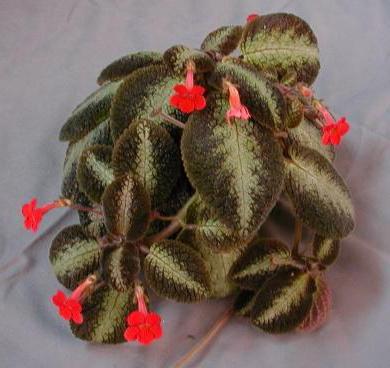

The flowers are tubular, with a 5-lobed limb. The most common color is red. White, yellow and blue flowers are also common.
Episation is an ampelous plant species. Young specimens are characterized by vertical growth of the stem, which then descends. At the same time, a large number of lateral shoots hanging downward occurs. In length, they can reach 60 cm. An adult plant has about 30 pieces of this kind of shoots, 10 of which can bloom at the same time.
Characteristics of the types of episode
Root system: fibrous, of medium development.
Stem: soft, thin, long or shortened with densely spaced leaves, creeping.
Important: Episodes are cultivated as hanging flowers, suitable for life in hanging pots, precisely because of the formation of long shoots after the stem has been lowered, hanging over the edge of the pot.
Sheet plates: small-town along the rim, oppositely located, rather large, densely pubescent, with a shiny / matte / smooth surface; the color palette is very diverse, and rarely green.
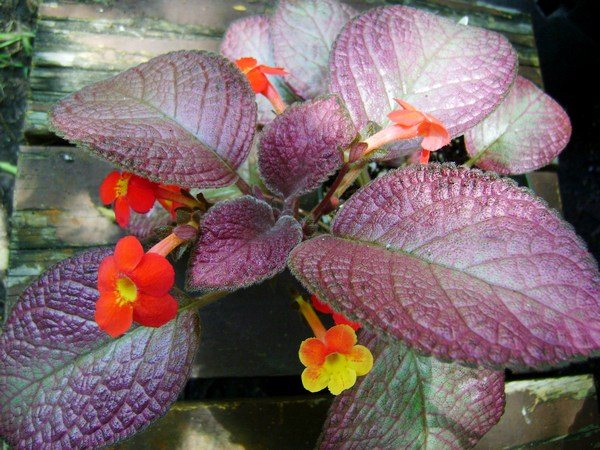

Leaf shape:
- Elliptical
- Broadleaf
- Broadly ovate
Important: a distinctive feature of the episodes is a crazy variety in leaf colors.Rarely is the accent on the green color of the leaves, although its unique speckled patterns in shades of marsh and light green colors look no less magical than tiger gold with brown, or dusty pink with dense scarlet pubescence.
Flowers: axillary "gramophone" 3 x 2 cm; in shades of scarlet, orange, lavender, blue, cream, yellow and pink (for example, copper epistle); rarely - speckled; each flower has 4 stamens; single; tubular.
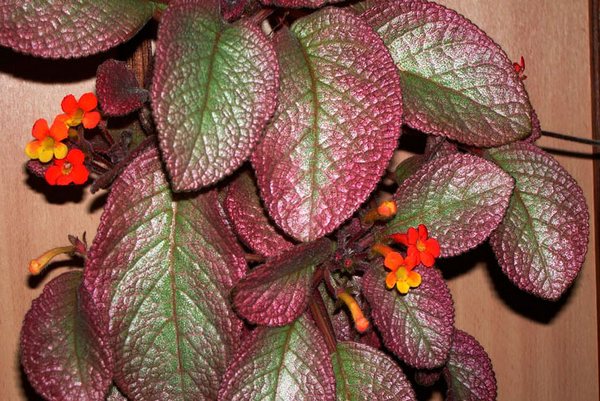

How to care
Indoors, episodes grow well in bright light, with shade from sunlight, in high humidity and in warmth. Direct sunlight hitting the plant can cause yellowing and burning of the leaves. The flower reacts poorly to drafts and a sharp change in temperature. When the heating season begins, the plant should be protected from exposure to dry air. To do this, you can put a wet towel on the radiator or put a water tank in the immediate vicinity.
As for the features of the potting mix, first of all, you need to pay attention to the looseness. The best option is a mixture of leaf and peat soil with sand. Perlite, vermiculite can be used as an additional component.
Growing difficulties
The episode is rarely affected by pests. These are mainly mealybugs, aphids, root nematodes. If the latter is defeated, it is necessary to cut and root healthy cuttings, and destroy the pot with the old soil. The rest of the pests are fought by treating the plant with insecticidal preparations (Aktellik, Fitoverm, Aktara).
Episode diseases
The plant is often affected by putrefactive diseases caused by excessive watering, kept in a cold room. When the root system is damaged, the plant is sluggish, the leaves are soft, wrinkled, although the soil is moist. You can save the flower by transplanting it into dry soil.
But if the roots do not work at all, only re-rooting of the cuttings will help. To do this, the shoots are cut 3 cm above the rotten tissue and set to take root. To prevent rot, you need to regulate watering, ensure that there are holes in the bottom of the pot and a layer of drainage.
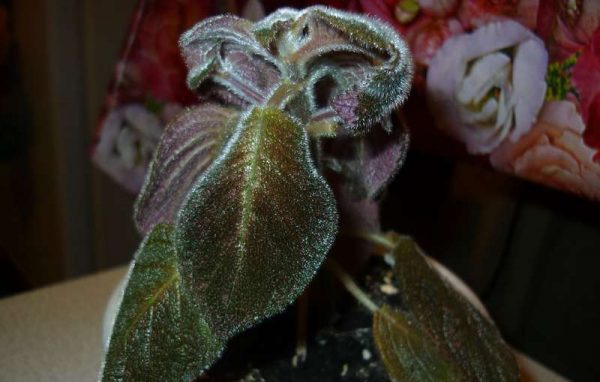

Decay of the root system of the episode.
Sometimes powdery mildew affects the plant. A white powdery coating appears on the stems and leaves. May occur due to keeping in a poorly ventilated room, growing in old soil. To combat it, fungicides are used - "Topaz", "Quadris" and others.
Other problems
More often, the owners of the episode are faced with the following problems:
- The appearance of brown spots on the leaves due to the ingress of water.
- Yellowing of leaves due to exposure to sunlight, excess fertilizer, low humidity.
- Drying of the tips of the leaves, weak growth of new shoots due to too dry indoor air.
- Leaves curl due to irregular watering.
- The leaf plate becomes smaller, loses color when there is a lack of lighting.
Watering mode
Next, a few words about how to water a plant like Episation. Responsible home care can lead to excellent results. It is important that the water for irrigation is settled, its temperature should correspond to the air temperature in the room. In the summer, watering should be done daily, but the amount of water at the same time d. B. small (it is better to pour it into a tray), since waterlogging has a bad effect on the condition of the plant. In winter, watering is carried out as the soil substrate dries up.
Flowering period
Depending on the species, the episode blooms in June or July and ends in September. There are varieties that bloom from April to October. Flowers are solitary, in the form of gramophones. In diameter, they usually reach 3-5 cm. Red shades are more common, but there are also yellow, blue, white, speckled variations.Withering flowers and leaves should be removed immediately so that the plant wastes less energy. There is no data on the development of allergic reactions during the flowering period.
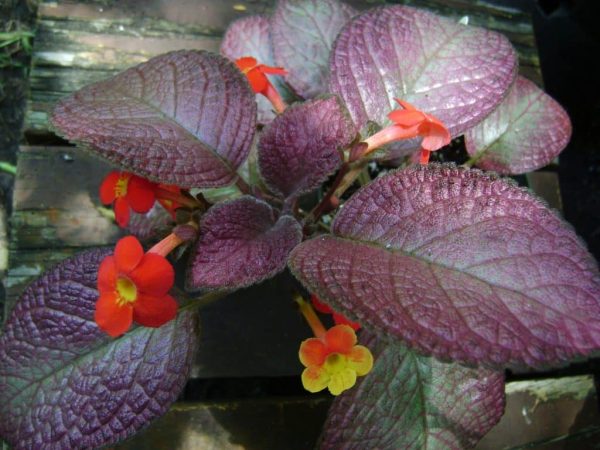

Beautiful flowering episode.
Episode does not bloom
If the episode does not bloom, this indicates the wrong conditions of detention. Any mistakes can lead to a lack of flowering. Mostly:
- Frequent overdrying of the soil.
- Dry or cold indoor air.
- Frequent application of nitrogen fertilizers and a lack of potassium-phosphorus fertilizers.
- Lack of lighting.
Episode: home care, reproduction
The simplest and most common way is to root young rosettes that have formed on the mustache shoots. The best period for this is the second half of spring.
1 method. At the bottom of a pot of shallow depth, first a layer of fine expanded clay or foam crumbs is poured, and a little coarse sand on top. Then the container must be filled with mixed in equal proportions of leafy soil and chopped moss (sphagnum). Immediately after planting, the outlets should be watered abundantly and covered with something transparent to maintain humidity and microclimate.
Method 2. It is possible not to separate the sockets from the mother plant. In this case, they need to be buried in a small container and covered with plastic wrap. Approximate rooting time is a week. An important condition is to ensure temperature and high humidity.
There is such a feature. If the rosettes are immersed in water, the roots will appear much earlier than in the soil. However, most often the processes subsequently do not withstand being in a dense substrate and rot.
Landing
The ability of this exotic plant to develop and grow rapidly, as well as its tropical origin, determine a number of specific requirements for planting and transplanting an episode. In order for this flowering perennial to fully develop, feel good, bloom in a timely manner and for a long time, the following conditions must be observed in the procedure for planting it:
- selection of a suitable pot in terms of volume;
- high-quality soil mixture;
- competent execution technique.
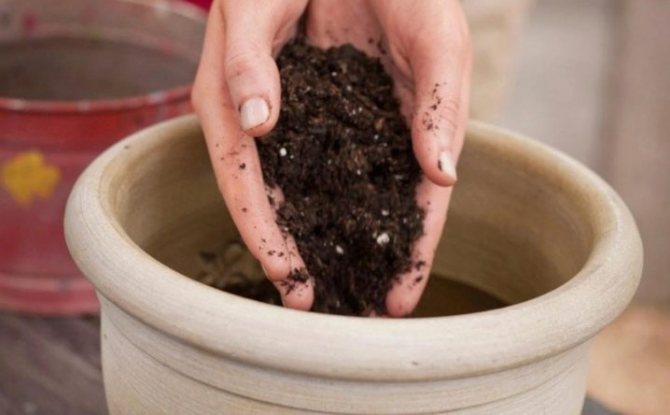

When choosing a suitable pot, it is better to give preference to not very deep, but wide containers. Considering that the roots of this plant are superficial, the episodes are suitable for a moderately low and spacious pot.


The optimal pot width is considered to be within 20 centimeters. A capacity of this diameter will not take up extra space on the windowsill, but at the same time it will allow the roots of the flower to fully develop
It is important to ensure that there are holes at the bottom of the pot to drain excess water.
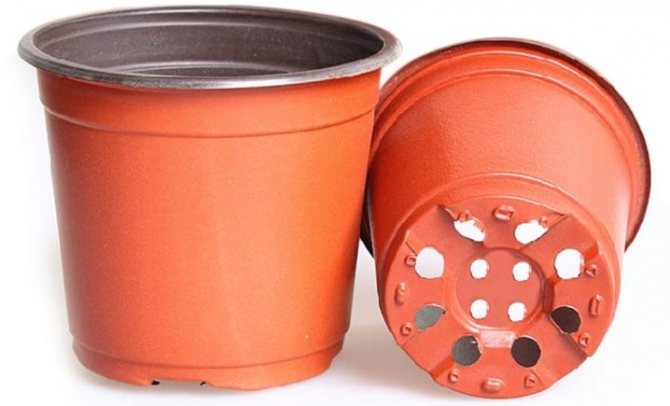

If an episode requires a container of a much larger diameter, it makes sense to think about dividing its bush. This procedure will rejuvenate the plant and, at the same time, replenish the green collection with new specimens.


When planting or transplanting an episode, attention should be paid to the quality and properties of the soil mixture. This exotic prefers light, moisture and air permeable mixtures with an acidity of 5.5 pH.
The episode will feel comfortable enough in a soil mixture consisting of such components as:
- sheet land - 2-4 parts;
- peat - 1 part;
- sand - 1 part.


In the absence of leafy earth, this component can be replaced with a mixture for Uzambara violets. To improve the drainage of the soil mixture, it is allowed to add a small amount of charcoal and sphagnum moss to it. Before filling the pot, all ingredients of the soil mixture should be thoroughly mixed.
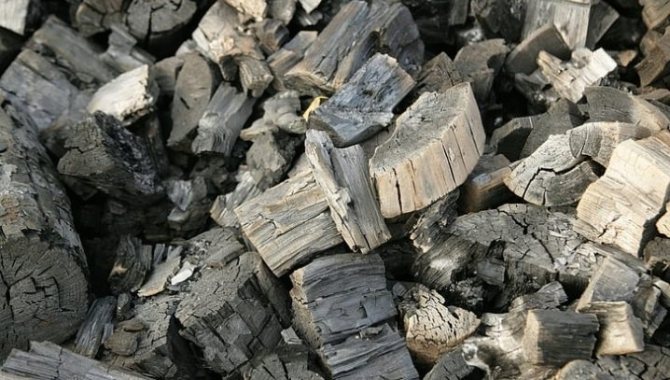

Before planting the plant, a layer of drainage is placed on the bottom of the new pot. It is recommended to use crushed expanded clay, clean pebbles or gravel as drainage
A soil mixture is poured over the drainage layer, after which a flower is carefully placed in a pot together with an earthen lump on the roots
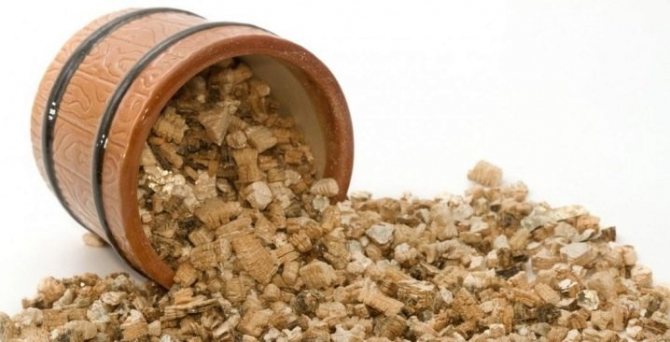

Having placed the plant in a pot, the soil is poured from the sides and compacted a little.The root collar is not buried during planting. After the procedure, the plant needs to be provided with gentle conditions of detention, which will accelerate the process of its recovery.


Location
If you love plants in hanging pots, then your option is just an episode. Home care provides for just such a location, since in this case the shoots hang down, which has a beneficial effect on the state of the plant organism. Mature, mature specimens make an indelible impression: falling air outlets, consisting of bright flowers resembling lanterns in shape.
As already mentioned, light is the condition without which the episode will not develop well. Home care for this plant is not too difficult. But the choice of location is very important. The best option is the east or west side. If this is not possible, then it must be remembered: when the plant is located on the southern window, then in the period from 10.00 to 14.00 it must be shaded. It is better to refuse the location on the northern windows. There is not enough light, which is why the shoots are strongly stretched.
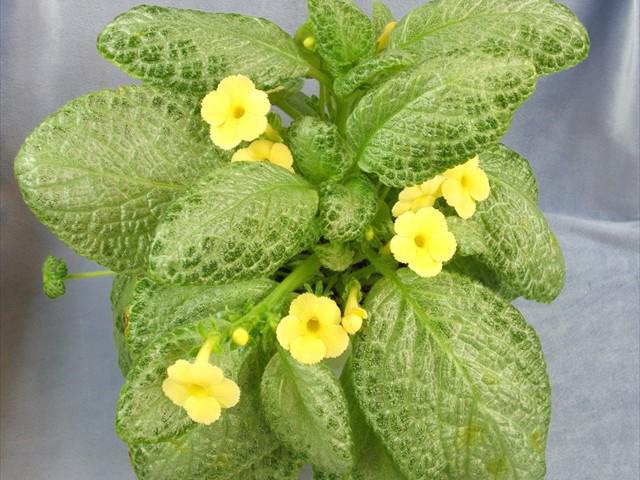

You need to hang pots with this plant on the side of the window. It is not recommended to rotate and move, because in this case the mosaic of the leaves will not be built up, and the pattern will not be formed.
Varieties and names with photos
| Episode type | Leaves | Flowers |
| Carnation episcia dianthiflora | Oval, pubescent, shades of green | White, tubular, carnation-like |
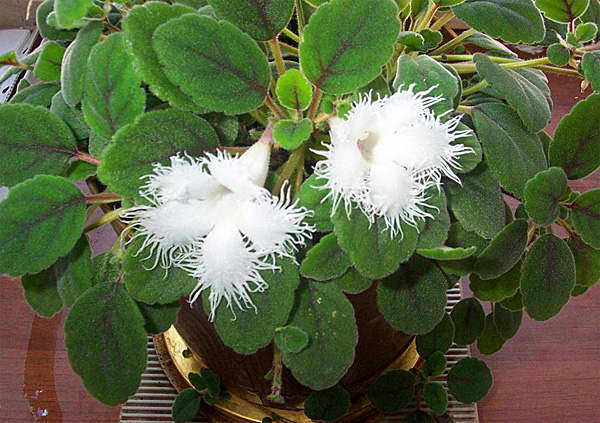

| Episode type | Leaves | Flowers |
| Creeping episcia reptans | Hairy, silvery green | Carmine, fringed |
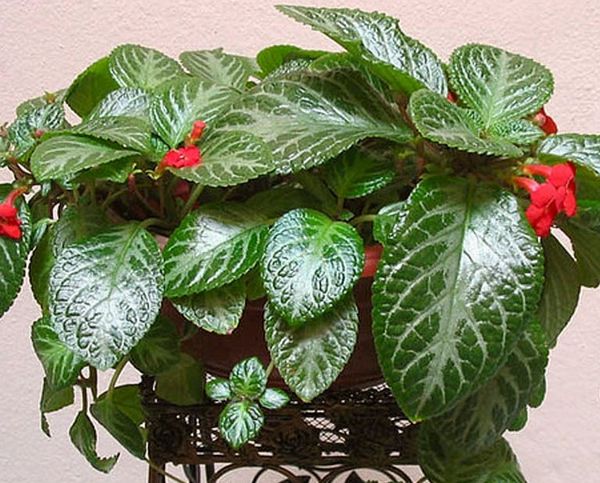

| Copper-red episcia cupreata | Elliptical, large, brown to coppery | Yellow corolla, red spots |
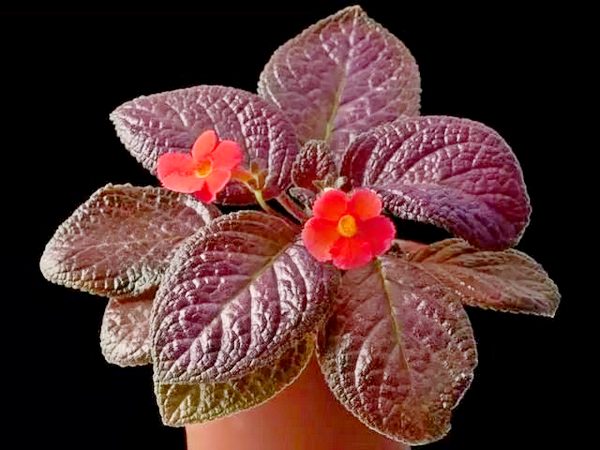

| Episode type | Leaves | Flowers |
| Episcia chocolate soldier | Brown-green, silvery-blue dots | Dark burgundy |


| Episode type | Leaves | Flowers |
| Forest beauty episcia silvans beauty | Glossy, in shades of silver | Carmine, red |


| Episode type | Leaves | Flowers |
| Episcia northern light | Glossy, pearlescent tint | Red |


| Episcia Silver Sheen | Pubescent, in shades of silver, edged with green or brown stripes | Orange red |


| Episode type | Leaves | Flowers |
| Lilacina viridis | Large, pubescent, fine-toothed, emerald green, with a silver scattering of veins | Lavender, lilac, with a white rim |


| Kee wee | Large, rough, shiny, with a brown dusting | Orange-red, yellow throat |
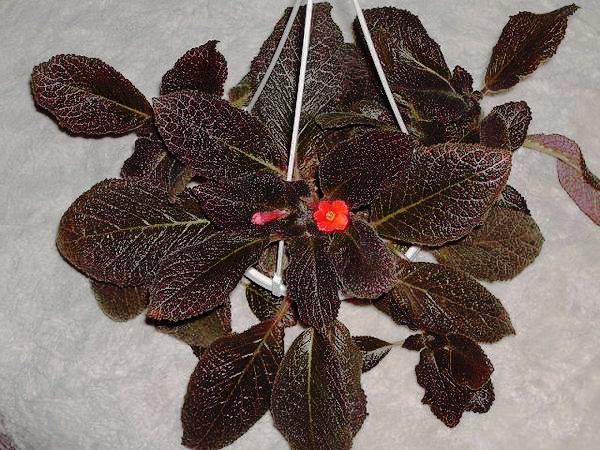

| My precious | Large, glossy, bumpy, green-lime shade, with pearlescent veins | Yellow, lightened edge |


| Episode type | Leaves | Flowers |
| Yellow mist | Large, smooth, with a silvery pearl scattering along the veins | Bright yellow |
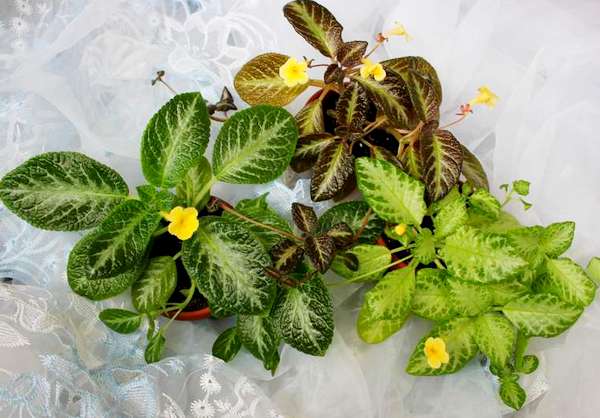

| Episode type | Leaves | Flowers |
| Gray lady | Hairy, medium, toothed, in olive shades | Red, orange, yellow peas |


| Silver dust | Medium, dark, olive green, with contrasting mesh veins | Carmine, orange, bordered with a light rim |


| Episode type | Leaves | Flowers |
| Faded jade | Light green, pearlescent along the central | Orange-red, yellow throat |
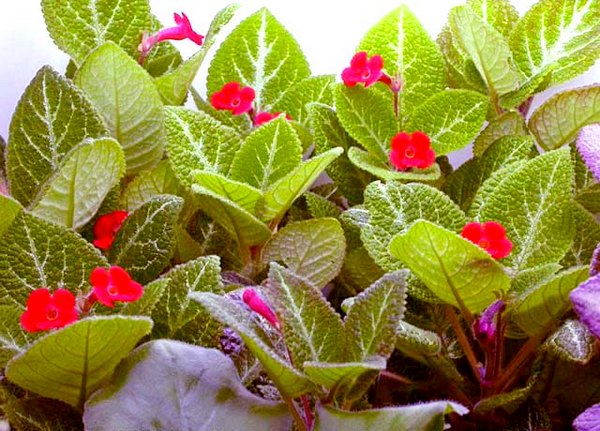

| Сhocolate cream | Chocolate brown with wide pink veins | White, fringed at the edges |
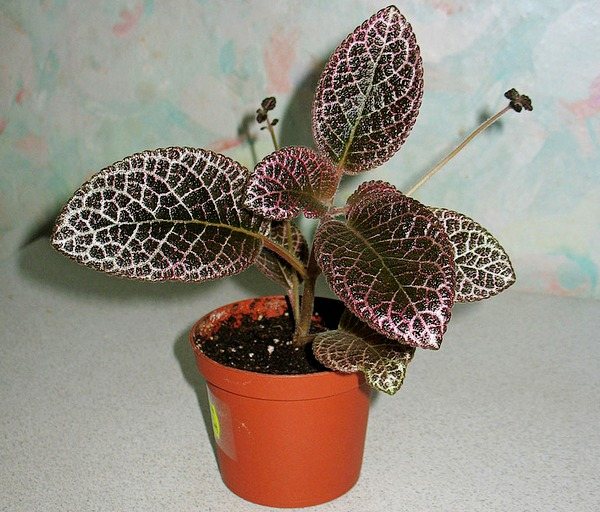

| Episode type | Leaves | Flowers |
| Silver skies | Miniature view, in shades of green, with a raspberry tint | Carmine |


| Tiger stripe | Swamp shades, veined like a tiger skin pattern | Scarlet |
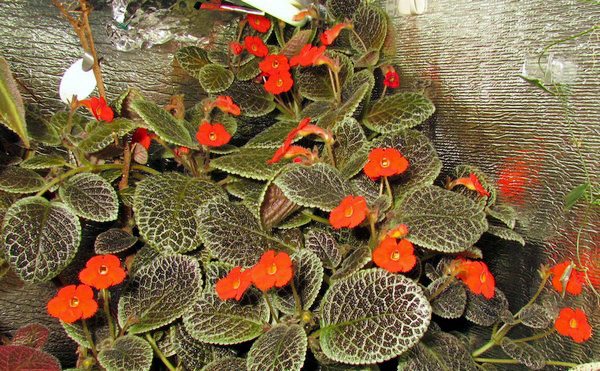

| Episode type | Leaves | Flowers |
| Pink acajou | Medium, fine-toothed, silvery-green, with chaotic pink blotches | Carmine |
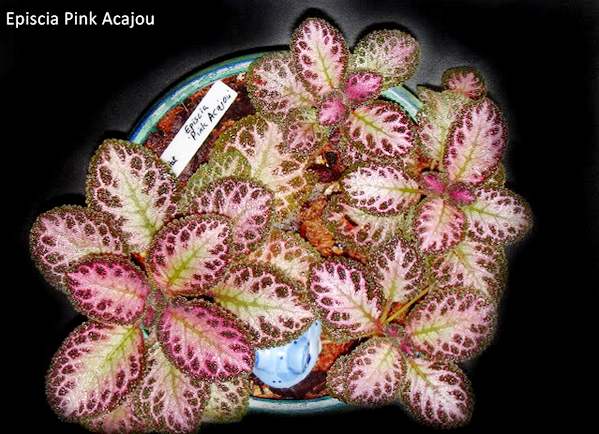

| Episode type | Leaves | Flowers |
| Moon light | Light silver, with a brownish-pink border | Red |
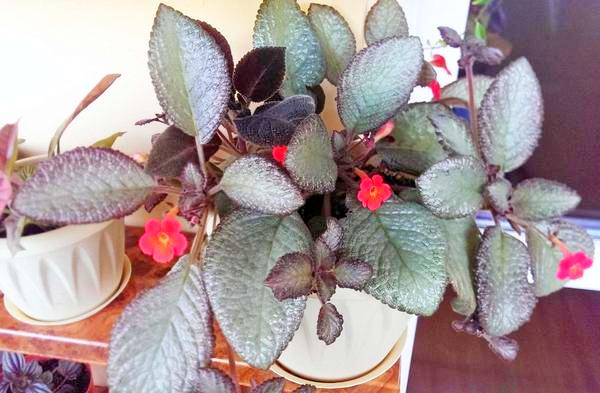

| Sun gold | Small, olive, brown, shiny, herringbone | Bright yellow |


| Episode type | Leaves | Flowers |
| Butternut | Light green, with brown spots, young leaves - pink shades | Red |


| Episode type | Leaves | Flowers |
| Spring symphony | Glossy, large, dark olive | Orange, scalloped around the edge |
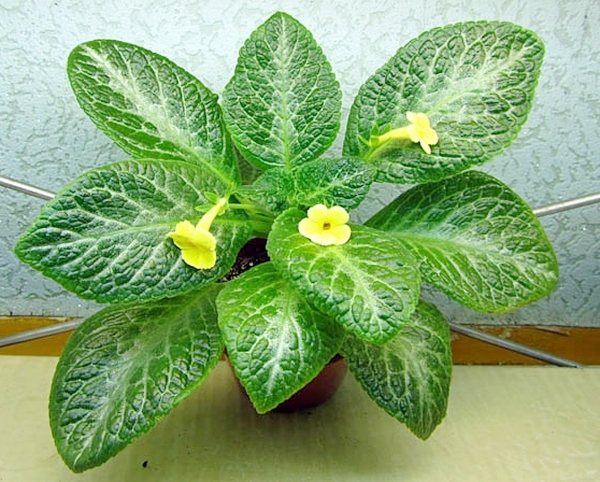

| Aloha mauna loa | Rounded, pubescent, dark brown tortoiseshell color | Orange red |
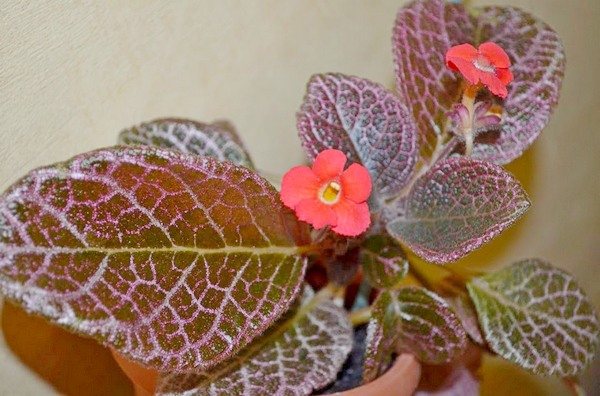

| Episode type | Leaves | Flowers |
| Pink panther | Hairy, dark green, herringbone | Hot pink, scalloped |
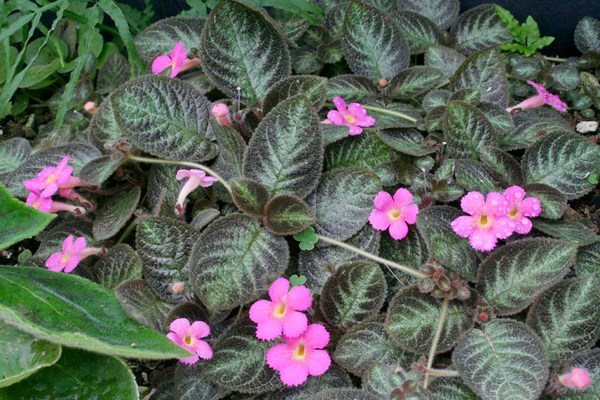

| Episode type | Leaves | Flowers |
| Country kitten | Small, embossed, chocolate shades, with silvery-pink veins | Red-orange |
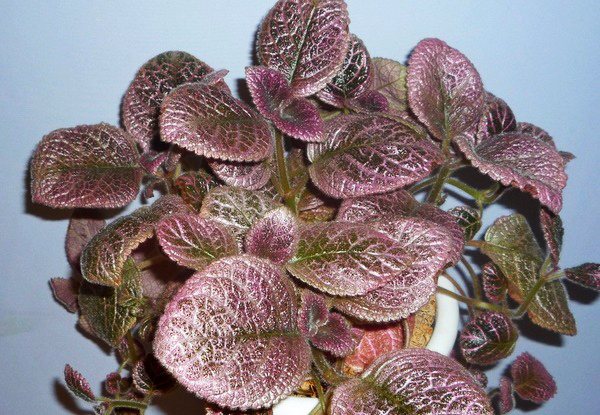

| Sea foam | Rounded, pubescent, raspberry pink, with a pink border and olive stripe | Orange-red, yellow throat |


| Episode type | Leaves | Flowers |
| Veronica's hair | Cherry, with mother-of-pearl insert | Scarlet |
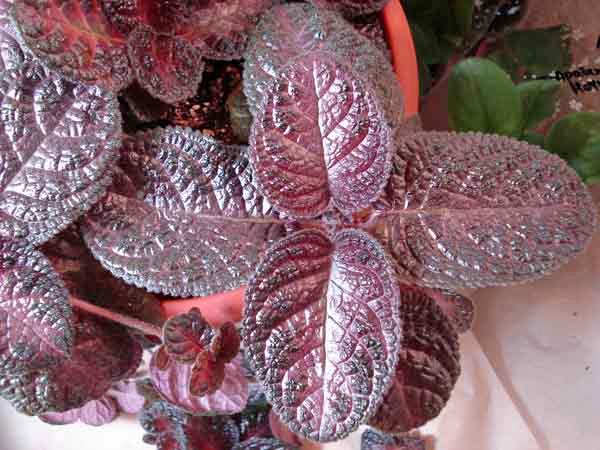

Varieties
The description is copper. It is considered the most popular type. The leaves are oval, pubescent. The name is due to the fact that the leaves, being green, have a copper tint. Their length reaches 12 cm, and their width is 8 cm. Hybrid varieties have their own characteristics, for example, the brown edges of the leaves. The flowers of the Neptune variety are red, while the Tropical Topaz variety is yellow.
Episation is carnation. It is characterized by a smaller leaf size compared to other varieties. Their color is green, with reddish streaks. The flowers are white, the edges of the petals are fringed, which makes them look like carnations.
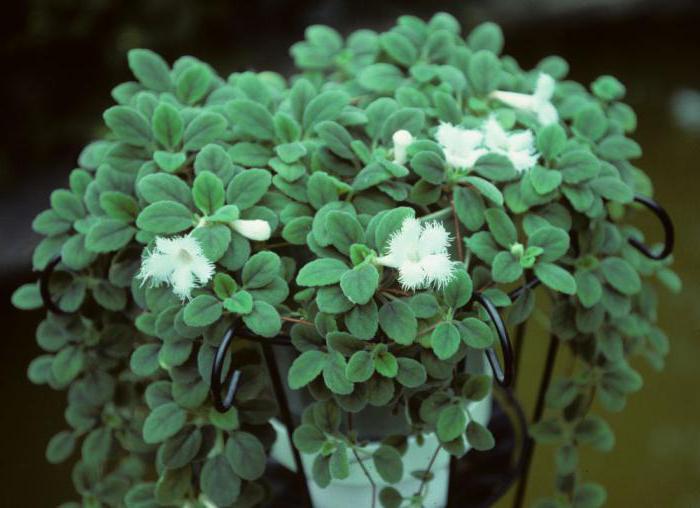

The epic is purple. The leaves reach 10 cm in length, are painted in a bronze-green color. The flowers are white with lilac, the middle is yellow, with a lilac edging.
Introduction
The eye-catching plant has long been noticed and studied up and down both by scientists and by amateur flower growers.
The first were named an unusual flower by an episode, - lilac, creeping, copper, point, clove, and the indigenous inhabitants of the American continent ignorant of sophisticated scientific names, with the habitat climate native to the plant, gave descriptions such wonderful names as violet flame, orange violet, African violet, peacock flower and even a plant - chameleon.


Continuous selection periodically introduces new varieties, and often amazes with the invention of completely unique leaf colors, from chocolate to silver, from raspberry to purple, from light green to pearlescent.
A touching plant, pubescent with the most delicate leaves, does not leave indifferent and charming beauty of its flowering - against the background of patterned leaves, multi-colored delicate bright buds are scattered, and delight with the long-term length of their floweringstarting approximately in March and continuing until mid-November.
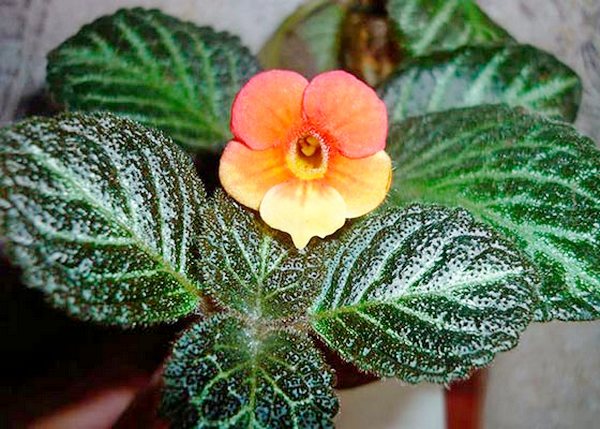

Diseases and pests
If the foliage has become spotty or yellowed, do not worry, it is important to understand the reasons for the changes in time and take action. The appearance of stains, as a rule, is associated with low water temperatures during watering. Cold water affects the change in pigmentation and disrupts the process of photosynthesis. Also, do not forget that when watering, water should not fall on the leaves, which can also cause their spotting.
Yellowing indicates a violation of mineral metabolism. To solve this problem, diseased leaves should be removed and a complex of fertilizers selected specifically for this species should be added to the soil. This procedure must be repeated several times until the painful symptoms disappear.
For many flower growers, the favorite houseplant is an episode. It doesn't take too long to take care of it at home.
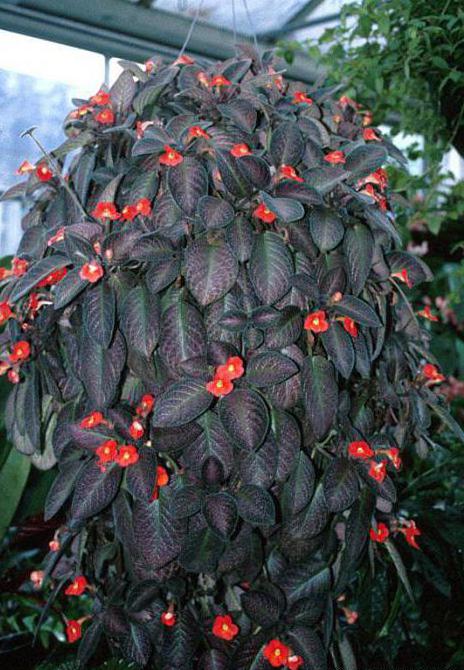

At the same time, non-compliance with simple rules can quickly lead to the death of the plant. To enjoy the extraordinary beauty of the episode, the first thing to do is to choose the right location. And also provide a sufficient amount of light and the correct watering regime. That's probably all. Now you know how to take care of your essay at home.
Landing rules and features of care for the episode


- This flower grows well in small pots. For them, high-quality drainage is necessarily arranged, the soil is selected loose, but not particularly nutritious. It is even allowed to purchase it in a special store, if it is not possible to mix leafy soil, peat and sand in proportions (3 to 2 to 1).
- Water the plant with water at room temperature. The amount of moisture should be abundant so that the soil in the pot does not have the opportunity to dry out. At the same time, it is advised to ensure that moisture does not stagnate.
- The flower needs a sufficient amount of light, but direct exposure to the rays of the sun is contraindicated for it. It is recommended to grow it on windows facing east or west. The optimum air temperature for this plant should be between eighteen and twenty-five degrees Celsius.
Moisture level and feeding rules
For adult flowers, the moisture content in the room air does not play a role, but for young plants it is quite an important factor. There should be plenty of moisture for them, therefore, after watering, it is advised to cover flowers with polyethylene, creating a greenhouse effect.
The episode is maintained with fertilizing components applied to all plants during the flowering period. Here you should carefully monitor the dosage, which should not exceed one gram of the drug for each liter of water.
Flower propagation
This process is easy to organize with cuttings, single leaves or seeds. But the latter method will be accompanied by the loss of the characteristics of the variety. The easiest way is to root the side branches. They are simply placed in water, submerged four centimeters. After a few days, roots begin to form, and the cutting is transplanted into a pot with a soil composition.
The main types of plants
Known varieties and hybrids differ in different shades of foliage and inflorescences. For indoor cultivation, copper is most often used. Its leaves are brown, pubescent.


A variation of it is Episode Silver Shiin, which has a silvery shade of leaves, outlined with a brown border and covered with specks. Flowers are distinguished by a red-orange hue. Another variety is Sylvanas Beauty. Its foliage is smooth and silvery, the inflorescences are bright red.
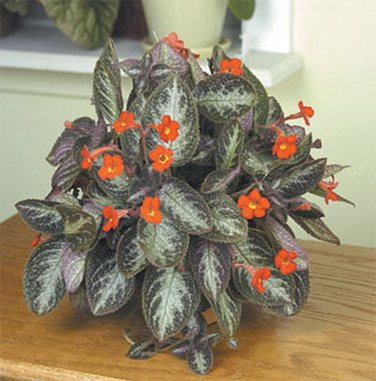

Choklet solger - is distinguished by the abundance of flowering. The leaves are green-brown, covered with dots of a bluish-silvery shade. Dark red flowers are located on the pedicels of several pieces.
Another species was introduced from Brazil - creeping episode. The inflorescences are large in size, the foliage is black-green, covered with silvery veins.
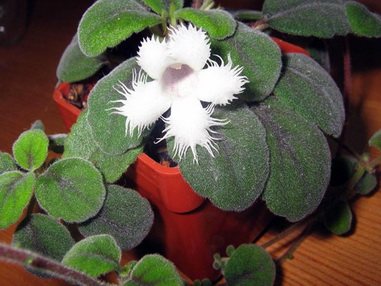

Episode carnation is native to Mexico. The leaves are of the usual green hue, but the uniqueness lies in the inflorescences - large, white, with an elegant fringe.
The plant is unpretentious to care for, it develops well on the windowsill in indoor conditions. With the right care, it can beautify your home perfectly.
Useful properties of an episode
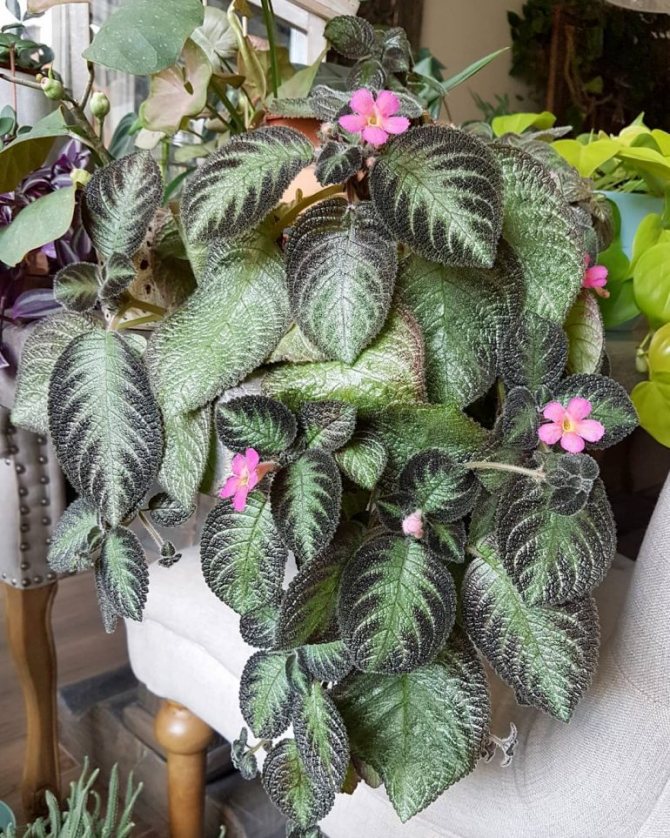

Episation has the ability to purify the air, saturating it with oxygen. The life force of this miniature plant is conducive to creative work and brings joy of being. That is why the episode is great for offices and workrooms. To improve relations between spouses, the plant is recommended to be placed in the bedroom.
The velvety beauty of a non-standard cousin of Columba and Achimenes
The episode, which belongs to the most beautiful representatives of the Gesneriev family, is considered to be ampelous cultures. True, the plant is found on sale both in hanging pots and in ordinary pots: its shoots are long, but not so much that it would be impossible to grow an episode on windowsills.In tall containers, the episode forms amazing cascading bushes, as if scattering plants to the side and looks charming on the dining, kitchen table or windowsill, slightly capturing the area around the pot. In nature, this beauty is a creeping herbaceous perennial, and echoes of the "wild" past are felt in indoor culture as well.
Despite the fact that episodes are grown not only in ampels or hanging baskets, this plant does not develop in the form of a bush at all. Young plants keep straight, but then the bushes lie down, scattering developed shoots with daughter rosettes in all directions. The shoots of the episode are creeping or drooping, rather thick and strong, reaching from 30 to 50 cm in length. The rhizome is tuberous, creeping, thick, with a modified underground shoot, and sometimes with underground tendrils.
Leaves are either single or opposite, oval, wide enough, with a very dense edging. The luxurious foliage of the episodes seems to be fabric, velvety, and the colors are more than varied. The greens of the plant can be dark with a grayish or silvery shade, and pearlescent green, and brown, purple, copper, bronze, classically green, reddish. Shiny or dull, with prominent lighter veins, in which the color of the leaf plates seems to intensify, the leaves of this culture look invariably luxurious, but often old-fashioned.
From June to the end of September, the boring velvety description is transformed. On the plant, small, but very catchy scarlet tubular flowers with an almost imperceptible lighter pharynx flare up with bright stars. Peduncles are short, the shape of the flowers is swollen-tubular. Classic episodes are colored red, but today you can find on sale both episodes with orange flowers, and original copies with white, blue and even pink colors.


Episation is carnation.
Temperature and humidity
Room temperature is ideal for a tropical plant. From 18 to 25 degrees, the episode transfers with a bang. A young and immature plant needs not only abundant watering, but also regular moisture.
Spray the sheets or wipe them with a damp cloth. Over time, this need will disappear, since the adult description is completely indifferent to the humidity of the environment. The conditions of your home will be enough for her.
In another article, we described a plant called Ahimenes.
Transplant and soil
Adult plants are transplanted 2-3 times a year, in spring or autumn. A young episode is transplanted annually.
The plant needs a shallow wide pot with large drainage holes. The flower grows very quickly, so the new planter should be 4-5 centimeters larger than the previous one.
A drainage layer of expanded clay or small stones should be laid at the bottom. The soil should be light. It is good to allow air to pass through. Experienced gardeners recommend using leavening agents to prevent soil compaction. Air access is very important for the roots, which will help the plant to develop correctly.
For planting episodes, a ready-made soil composition for violets or soil prepared independently from leaf and sod land, peat and sphagnum is used.
Before transplanting, the flower should be watered abundantly, then gently dig it out of the ground and examine the root system. Dried and rotten roots must be removed and cut with charcoal or sulfur. After planting, the flower is watered and excess water is removed from the pan and the pots are placed in partial shade for 7-10 days.
How to form an episode bush correctly
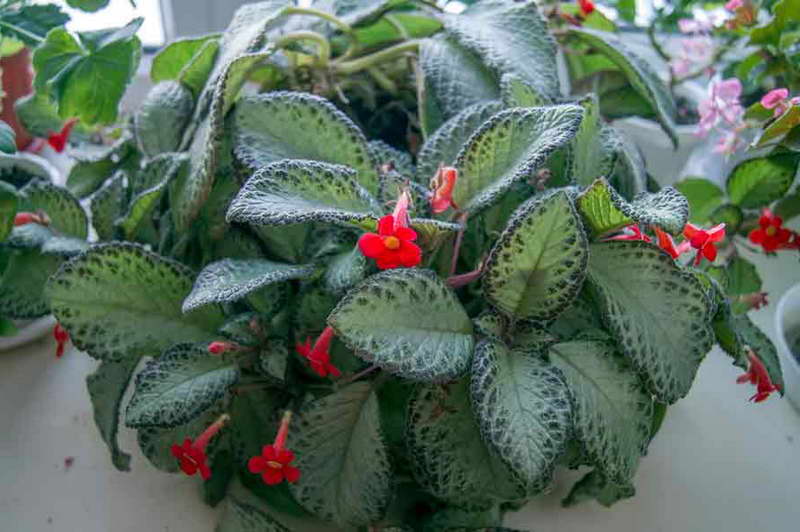

Description of the variety name and photo Reproduction and care
The flower grows very quickly, it is important to pinch the central shoots at the tops in time so that the stems do not lengthen, otherwise bare areas will turn out from below, hanging not very nicely from the pot. In addition, such shoots often break.
They also do this: at a height of 20 cm, the growth of the flower is limited by installing a metal lattice with small cells. When the pot is completely filled with green mass, the grate is removed, allowing the rest of the shoots to hang down.
Antennae of the episode, expanding in breadth, can root in pots with neighboring plants, if not kept track. Therefore, it is recommended to cut them off in large quantities and, if necessary, root them, getting new plants.
Reproduction
Reproduction of the episode is carried out:
- seeds;
- stem cuttings;
- sockets.
Seed propagation is bad for the varietal qualities of flowers. Seed shoots, planted in moist soil, appear no earlier than a month later. Then the seedlings are transplanted into pots.


The easiest way: cut the stem cutting, plant it in a separate small pot with light soil. After the dive, the pot is covered with a jar, creating a greenhouse environment, and waiting for rooting.
How to propagate by rosettes: without separating the mustache from the mother flower, the rosette is placed in a mixture of wet peat and sand. The room maintains a temperature of + 25˚ C. When the roots appear, the rosette is separated from the main plant and planted in a pot.
Tip Rosettes root easily on their own, so it is better not to place a container with an episode over pots with other flowers.
1. Seven Secrets of Success:
| 1. Growing temperature: all year round at normal room temperature. |
| 2. Lighting: shade from direct sunlight in the daytime, the episode can be in the sun only in the evening and in the morning. |
| 3. Watering and humidity: watering with water at room temperature in such a way that the top layer of soil 1 - 2 cm thick dries up in spring and summer. In autumn and winter, the frequency of watering is reduced in accordance with the temperature of the content. It is advisable to use bottom irrigation. Air humidity is high. |
| 4. Pruning: the tips of the branches are regularly pinched, the forming pruning is carried out after flowering, the wilting buds are removed. |
| 5. Priming: neutral or slightly acidic soil with excellent drainage and a loose texture, which allows moisture to pass through easily and allows the root system to breathe. |
| 6. Top dressing: mineral fertilizers 2 times a month in spring and summer, every month - in autumn and winter. |
| 7. Reproduction: air layering, division during transplantation, children, leaf, stem and apical cuttings, also grown from seeds. |
Botanical name: Episcia.
Episode flower - family... Gesnerievye.
Origin... Tropics of America.
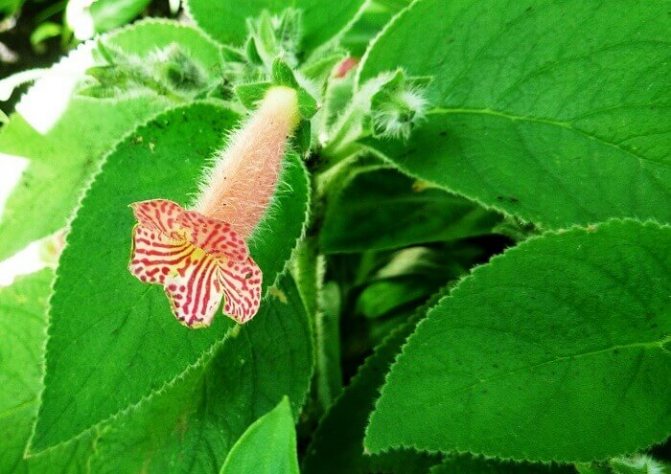

Description. Epiphytic is a small, but quite diverse in appearance, genus of plants, which includes both epiphytic and terrestrial species.
Under the ground, the plant has creeping rhizomes - modified shoots.
Stems erect, branched or creeping, up to 50 cm long. On contact with the ground, the stems can take root.
Leaves simple, broadly lanceolate, with pronounced veins, covered with sparse pubescence. The edges of the leaf blades often have small denticles. The color of the leaves is very varied and includes green, pink, purple, white, brown and bluish shades. Among other things, on the leaf plates there is a whole network of veins capable of reflecting the sun's rays, and then the leaves of the flower can have a pink or silvery sheen.
Flowers funnel-shaped, solitary, small, but very showy, white, red, pink, yellow. Their rounded petals often have lace fringes around the edges. In length, the flowers reach 3 cm, and in diameter they can reach 1.5 cm.


Height... Episode growing very fast, but in height does not exceed 20 cm... The length of the shoots of the plant can reach 30 - 60 cm. In good conditions, the plant develops quickly.
Gallery: episode (25 photos)
How to deal with pests
The Episode is rarely attacked by parasites.But if this still happens, then the reason is non-compliance with the conditions of care and maintenance or the presence of a diseased plant nearby.
The invasion of insects is easy to notice: the flower stops developing and blooming, becomes lethargic, can drop its buds and wither.
The pests themselves live mainly under the leaves or fly throughout the bush. Traces of their vital activity appear - yellow or pale spots, silvery stripes, sticky films. Episodes are attacked by scale insects, aphids, whiteflies, thrips, root nematodes and mealybugs.
To get rid of pests that live in the aboveground part, you can mechanically peel the leaves with a sponge dipped in soapy water. Then treat the crown with an insecticidal agent, according to the instructions on the package.
Parasites living on the roots are forced to transplant with the complete destruction of the old soil coma. The underground part is treated with an insecticide, fungicide, and the plant is planted in new soil.
It is better and easier to carry out preventive measures against insect attacks - spray with insecticide from a small spray bottle once a month.
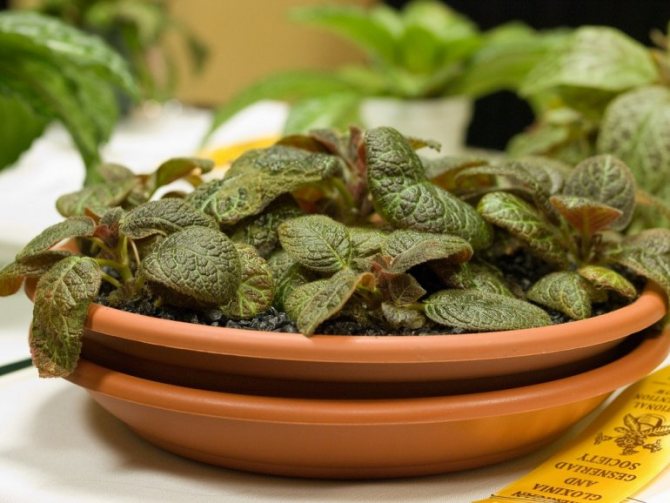

Important: if the plant is attacked by root nematodes, due to which tumors appear on the roots, nothing can help it, and the only way out of the situation is to grow a new flower through cuttings.
Growing an Episode from a Seed
The episode is easy enough to grow from seeds, but it should be borne in mind that some varietal traits may be lost. They are sown at the end of January or February. In this case, the plants bloom in the summer of the same year. Sowing seeds is carried out in a loose, nutritious substrate without subsequent embedding.
From above, the container is covered with a piece of glass or film. The temperature must be maintained at + 20 °. The first shoots appear in 2 weeks.
Seedlings develop intensively, after 2-3 weeks they can already be dived.
Correct formation of the bush
The bush must be trimmed periodically, otherwise it will look sloppy. It is necessary to remove the overgrown shoots. When hanging over the edge, the stems will fray. If you want to leave them, you need to attach the lattice next to it. Attach shoots to it as it grows.
Reproduction of the episode in the conditions of the windowsill
Plant propagation is possible in several ways:
- vegetatively (cuttings, shoots, leaves);
- seeds.


It is better to use the vegetative method. It retains the characteristics of the variety.


Vegetative propagation of the episode
A shoot can serve as a cutting, on which there are 3-4 nodules, but there are no lateral processes. It is planted in water (before the formation of roots) or directly into the ground. In the latter case, cover with foil.



